The Ultimate Guide to a Chobe National Park Safari
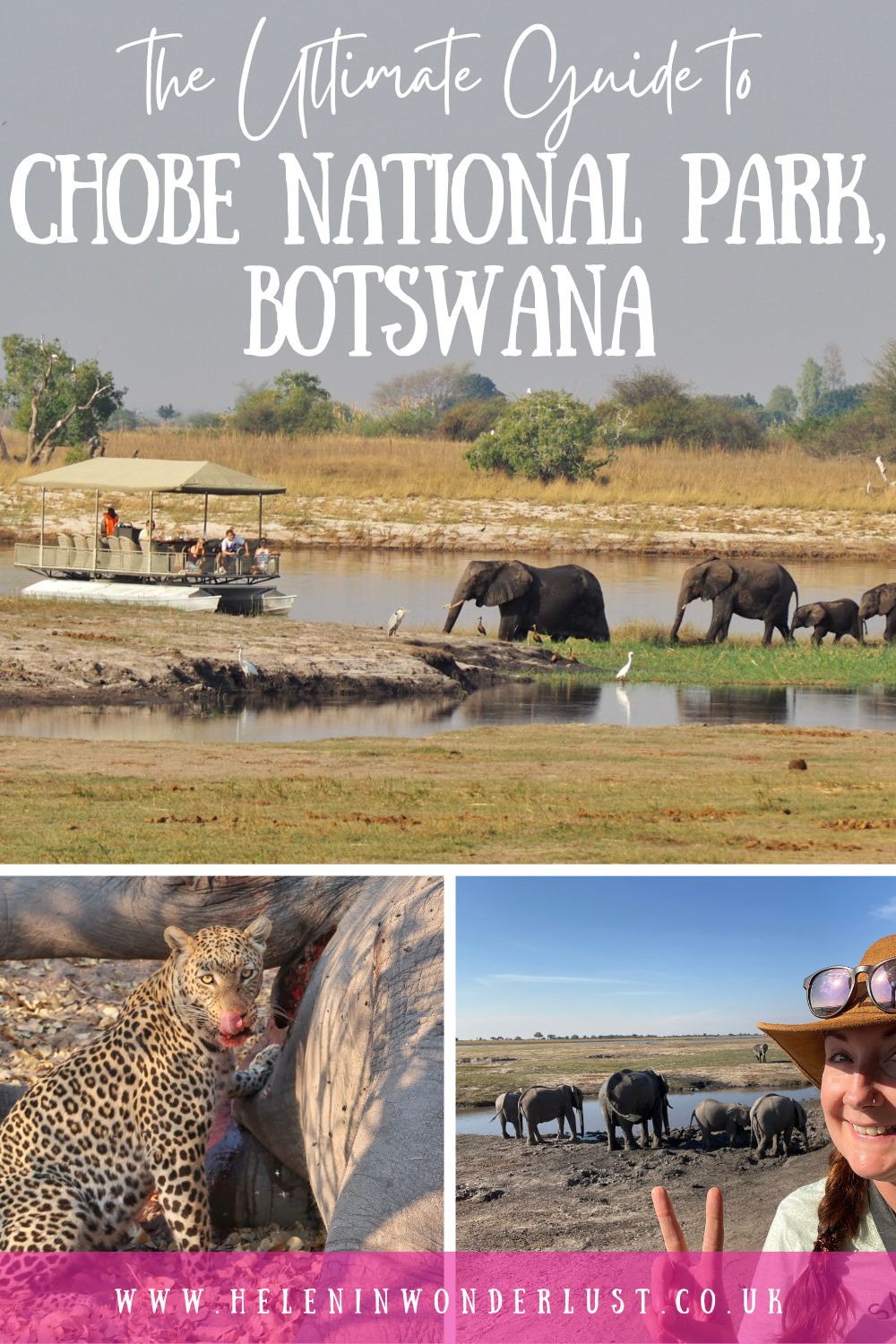
Chobe National Park in Botswana, known as the ‘elephant capital of the world‘, is one of my absolute favourite safari destinations in Africa.
Chobe was declared a national park in 1967 and it covers over 11,700km2 – that’s about the size of Qatar. It’s a popular destination for both guided and self-drive safaris – although a 4×4 is needed as it’s pretty sandy!
If I were able to dream up the perfect safari location, in terms of the scenery, the location, the accessibility, the animals, the lighting, the experience… then Chobe is probably it!
So here’s the Helen in Wonderlust guide to a Chobe National Park safari to help you plan and have an incredible trip!
Please Note: Some of the links in this post are affiliate links, which will earn me a small commission at no extra cost to you. Affiliate sales help with the running costs of this site, so thank you for your support!
The Ultimate Guide to a Chobe National Park Safari
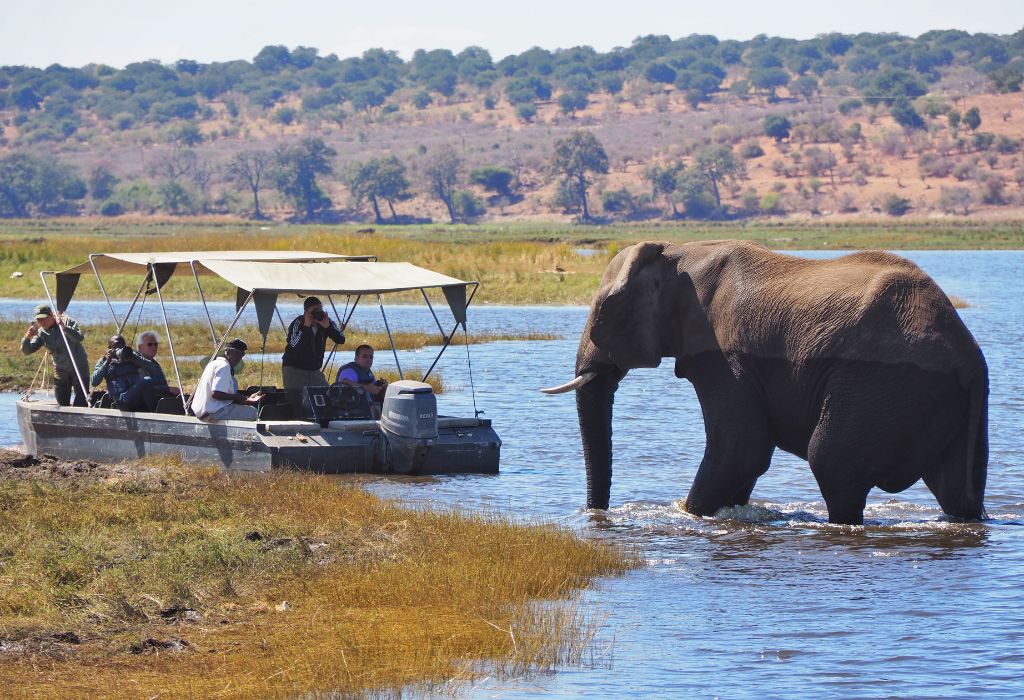
Is Chobe National Park Worth Visiting?
Absolutely! As I said above, I LOVE Chobe and I’ve visited quite a few times over the last 15 years.
Whilst Chobe covers a very large area, I’ve had some of my best ever wildlife sightings here. It’s renowned for being one of the best places in the world for elephants – with population estimates of between 50,000 – 120,000! That’s quite a wide range, but whatever the actual number – it’s a lot!
I was once on safari in the Chobe Riverfront area and we were literally surrounded by hundreds of elephants as far as the eye could see. It was absolutely magical.
It’s also one of the parks where I’ve had the most luck with leopard sightings (probably equal with the Masai Mara in Kenya, Serengeti in Tanzania and South Luangwa in Zambia), and it’s also quite common to see huge prides of lions. The Chobe Riverfront is where I saw my first (and only) brown hyena – albeit briefly.
It’s a really special place. And the light…. there’s just something very special about those Botswana sunsets, and sunrises for that matter.
Most Botswana group tours and overland tours will include Chobe National Park in their itineraries as it’s a very accessible park and also, very wonderful!
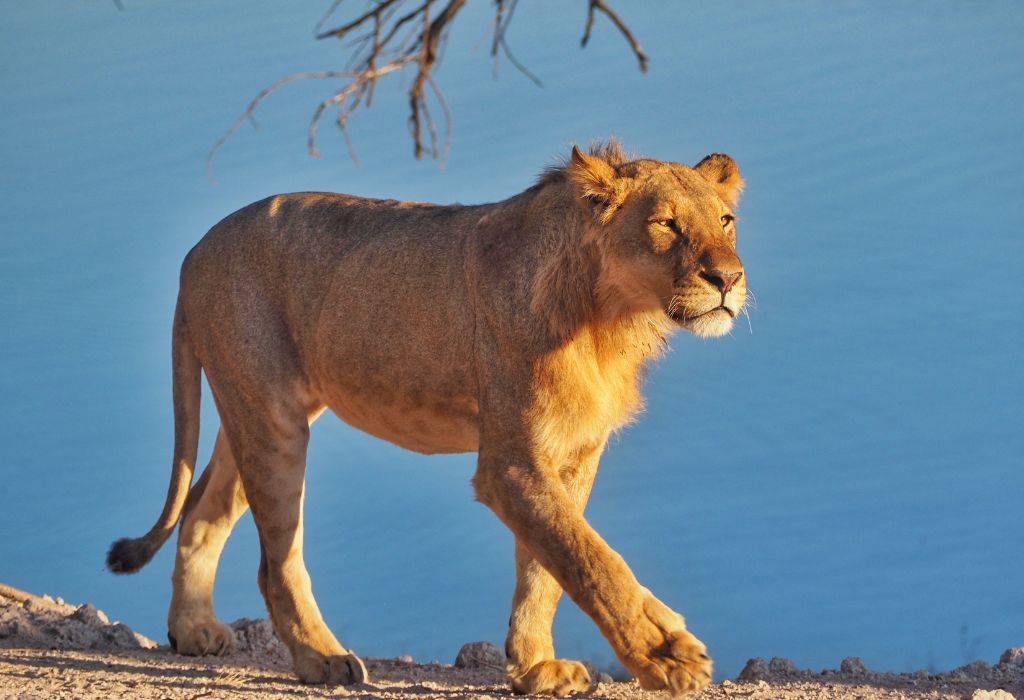
Geography of Chobe National Park
Chobe National Park is located in the northern part of Botswana and has many different areas, but here are the 4 ‘main’ areas:
- Chobe Riverfront (or Serondela): In the northeast of the park, close to the borders with Zambia, Zimbabwe and Namibia. This is the main area people are talking about when they refer to ‘Chobe National Park’ and it’s the most popular area to visit as it’s easy to get to and has a high concentration of wildlife, that is very used to humans.
- Savuti (or Savute) Marsh: In the southwest of the park, closer to the Khwai Conservancy, Moremi National Park and the Okavango Delta – we had great lion, leopard and elephant sightings here but this area is very remote and tricky to get to, so best to do a fly-in safari or if you’re driving, combined with Moremi/Khwai on a multi-day safari. You cannot drive there from any major town for a day trip and it’s too far to drive for a day trip if staying outside the park.
- Linyati Marsh: Located in the remote northwestern part of the park – most people fly to Linyati as the roads can be ‘brutal‘. Known for having elephant ‘megaherds’ as well as plenty of predators. This area can get waterlogged with the rains, so it’s best to check the road conditions before trying to reach here if driving yourself and perhaps best avoided if you’re not an experienced 4×4 driver.
- Nogatsaa: Located south of the Riverfront area. I went through here once and it is a very untouched, desolate and wild part of the park. We found the animals were a little more skittish here, compared with the Riverfront area. But I only briefly drove through here on the way out of the park, so we didn’t explore much.
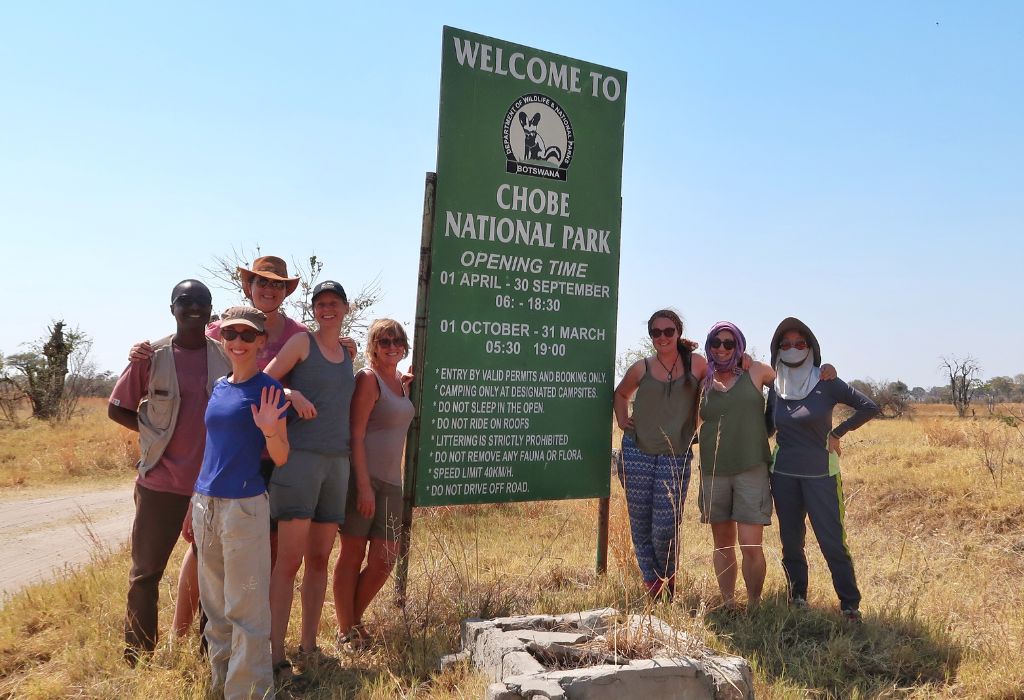
Getting To & Around Chobe National Park
There are a few different ways to enter Chobe National Park, including road, plane or boat.
If travelling by road, there are 3 main entry gates for Chobe National Park – Sedudu near Kasane, Mababe ‘near’ Maun (but closer to Moremi and Khwai) and Ngoma near the Caprivi Strip in Namibia.
There is also the Ghoha gate which is inside the park just north of Savuti. You can also exit at the Poha gate in the Nogotsaa area (we used this gate to go from Savuti to Elephant Sands), but you can’t enter there – and there’s very little info about it online. But I did find this.
If you stay near to one of the gates, you can do day trips into the park. But if you have the time, you could do a multi-day safari – either staying in one area of the park, entering and exiting through the same gate. Or entering through one gate and leaving through another.
To self-drive in the park, you will need a 4×4. For those without a 4x 4, you can get to Kasane relatively easily using local buses (or a 2-wheel drive car) and then take tours from there – either day tours or longer. You can also take tours from Maun (which is also easily reachable on the main roads), but these can be more expensive as this side of the park is much less accessible and needs to be part of a multi-day trip.
For those with a larger budget, flying into the park (from Kasane/Maun) and between airstrips inside the park/other parks is another option. Most of the lodges inside the wider national park are only accessible by light aircraft or helicopter.
Some of the luxury lodges/camps may be (technically) reachable by road, but park regulations prohibit self-driving to these locations due to vehicle restrictions and most don’t accommodate self-drivers anyway.
From Kasane (Sedudu Gate)
The main gate is the Sedudu gate, which leads to the Chobe Riverfront area. The gate is on the outskirts of Kasane town, near to the ‘Four Corners of Africa’ where Botswana, Namibia, Zimbabwe and Zambia meet.
Kasane has an international airport, with flights arriving from Maun in Botswana, Johannesburg and Cape Town in South Africa and Victoria Falls in Zimbabwe.
Kasane is also accessible by road from Maun – it’s around an 8 hour drive, but you can break up the journey stopping in places like Gweta (for the Makgadikgadi/Nxai Pans) and Nata (Elephant Sands) on the way (or vice versa).
Kasane is only 15 – 20 minutes from the Kazungula borders (where you cross to Zambia and Zimbabwe). Both Livingstone, Zambia and Vic Falls in Zimbabwe are just over an hour’s drive away.
As this gate is so accessible, you can take day trips to the Riverfront/Chobe Forest Reserve areas from Kasane, or even Livingstone and Vic Falls. You can also take short boat safaris into the park from Kasane and most of the lodges on the river.
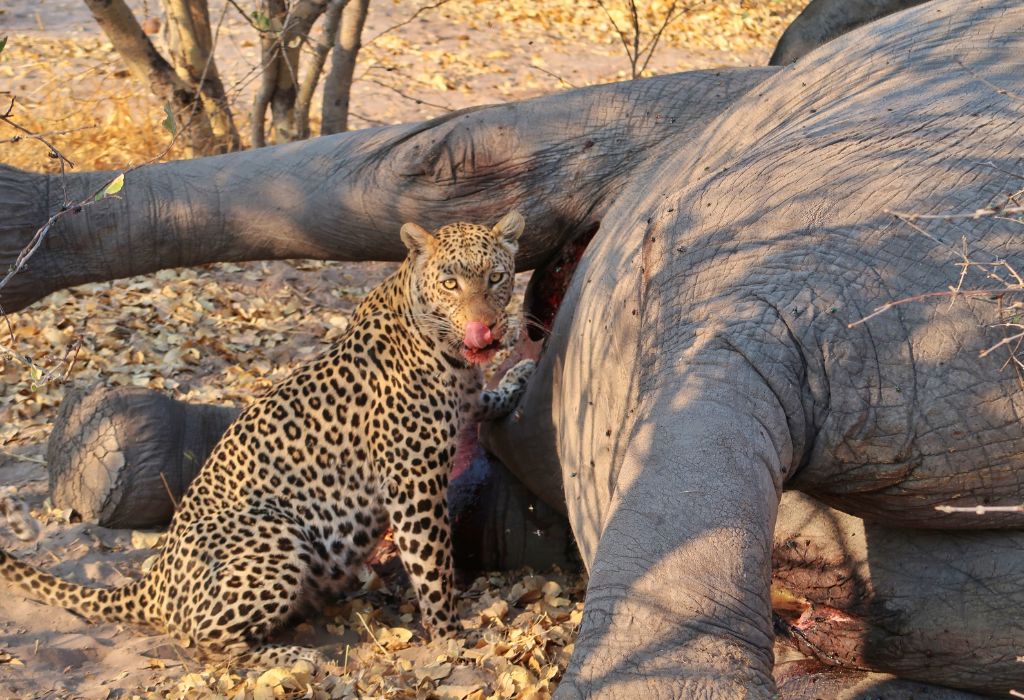
From Maun (Mababe Gate)
The Mababe gate is the one you would use if coming from/going to Maun, Moremi Game Reserve or the Khwai Concession. This brings you into the Mababe Depression area which is south of the Savuti area of the park.
This gate isn’t close to a major town (Maun is at least 3 or 4 hours by road on a good day), so it’s best if combined with a safari in Khwai and/or Moremi. There are also some lodges/campsites just outside the gate if you want to stay in one place and then day trip (to Mababe Depression/Khwai/Moremi) from there.
Maun has an international airport, with flights from Kasane and Gaborone in Botswana, Johannesburg and Cape Town in South Africa, Victoria Falls in Zimbabwe and Adis Ababa in Ethiopia.
We came through this gate during a multi-day trip where we drove in through the Mababe Gate (coming from Khwai/Moremi), camped in and travelled through Savuti and then left by the Poha Gate (Nogotsaa) travelling through the wilderness to join the A33 going south enroute to Nata and Elephant Sands, and then we travelled back north on the A33 to the Riverfront area via the Sedudu Gate.
The route from Nogotsaa to Elephant Sands wasn’t the best, so I probably wouldn’t do that gain!
Savuti and Nogotsaa felt very wild, compared with the Riverfront as you see a lot less other people. We had lots of great sightings, including lions, leopards and of course, lots of elephants. But you also need to be well prepared and a lot more self-sufficient – as you’re a bit more out on your own here! There are no shops or petrol stations to stock up!
From the Caprivi Strip (Ngoma Gate)
The Ngoma gate is near Namibian border (Ngoma Border) which is on Caprivi Strip (sometimes called the Namibian Panhandle). You can cross into Botswana here and then drive outside the park on the A33 transit road to Kasane (I did this, going the other way on an Intercape bus once) or you can enter the park through the gate and travel through the park to either Kasane or Savuti.
This gate brings you into the north of the park, not far from the Riverfront area and is a good option if you’re doing a Namibia and Botswana trip and don’t want to double back on yourself!
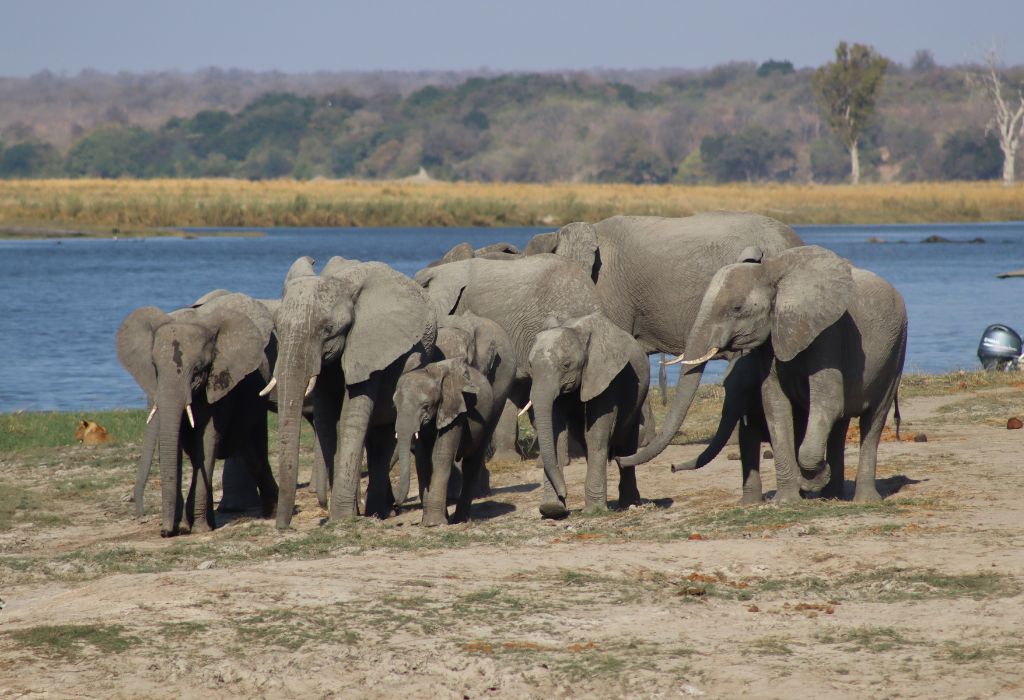
How Long to Spend in Chobe National Park?
As Chobe National Park is so accessible from Kasane/the Caprivi Strip, you can just visit for the day and see quite a lot in that time as the concentration of animals around that area is so high.
It’s also quite common for people to do day trips to the Riverfront from Livingstone, Zambia or Vic Falls, Zimbabwe. And if you’re just visiting for the day, without staying overnight in Botswana, you don’t forfeit your Zambia, Zimbabwe (or KAZA) visas.
But if you want to see more, it’s worth spending a couple of days or a night or two in the park. And if you want to see different areas, you’ll need to spend at least 3 or 4 nights, or even longer, inside the park.
But, likewise, a day trip to the Chobe Riverfront is also great if you are short on time.
When is the Best Time to Visit Chobe National Park?
The best time to go on a Chobe National Park safari is the cool, dry season, between May and October. During this time of year, the vegetation is less dense and the animals tend to gather near the water sources making them easier to spot.
But this is winter, so whilst it’s generally quite pleasant in the day, mornings and evenings, can be very chilly – especially in June – August (or when camping)! Between June/July and October is also the ‘high’ season, so the prices tend to be a lot higher.
The shoulder seasons of April, May, November and December are also good times to visit. You may get a little rain, but it shouldn’t be too bad and prices will be lower. Although these days the weather is becoming increasingly unpredictable.

Types of Chobe National Park Safari
There are lots of ways to go on a safari in Chobe depending on your preference or budget!
Self-Drive Safari
If you have your own 4×4 vehicle, either your own car or a rental, you can drive through the park camping at designated camping spots. I don’t think (but don’t hold me to it) that there are any lodges inside the actual park that you can self-drive to (so I would suggest checking with the lodge before you book if your plan is to self-drive).
For the campers, you can stay in ground tents, roof tents or camper vans. I’ve seen some incredible set ups from the overlanders and South Africans who travel up through Botswana with everything – including the kitchen sink!
You could also stay just outside one of the park gates and take day trips from there. Some companies (see below) can also help you plan, book and support you on your self-drive safari.
If you are self-driving I would strongly advise you to check the road conditions before you drive and join the overlanding communities on Facebook for advice. Apps like iOverlander and Tracks4Africa are also very useful!
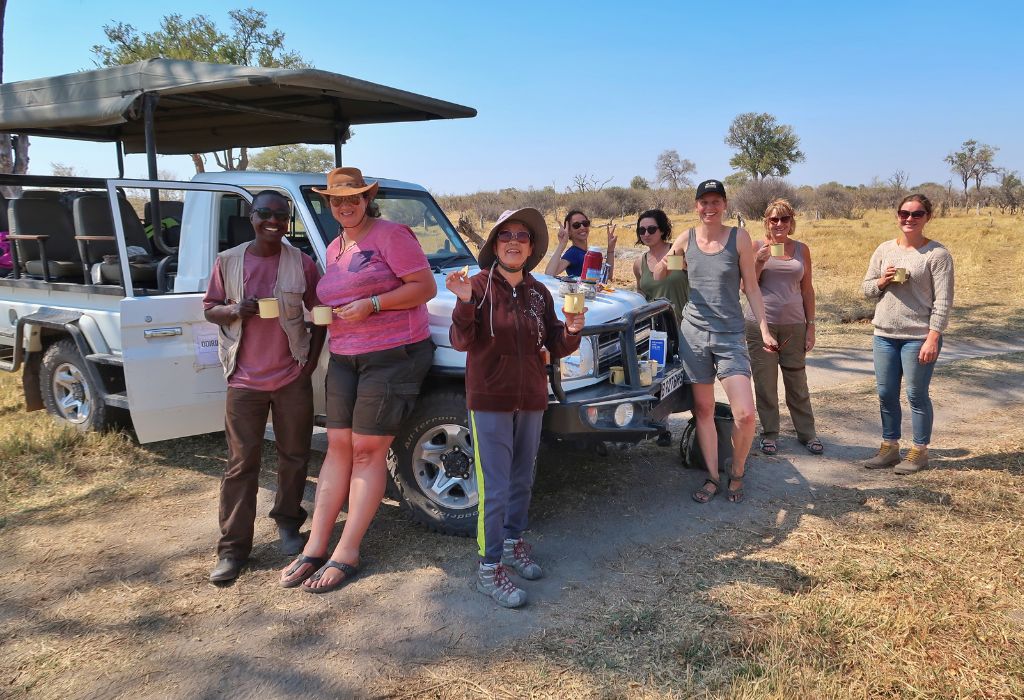
Guided Safari
If you don’t have your own transport, you can book a guided safari with a safari company or game drives with your camp/lodge. A guided safari allows you to relax and enjoy the safari, rather than worrying about driving or looking for animals.
These can be short one or two day safaris from Kasane or as I mentioned above, you can do multi-day safaris venturing through the park. I have some written up some Botswana safari itineraries here.
For the multi-day safaris, where you are moving locations, accommodation can be camping or lodges, with one guide driving you between them. You would usually arrange this via a safari company and they can organise a trip, based on your budget and accommodation preferences.
For the camping safaris, these vary from participatory safaris, where you help the crew with the set up of the camp (putting up your tents etc), cooking etc, through to non-participatory safaris, where everything is done for you. The cost will usually depend on how fancy the set up is and how much work you do. Non-participatory is always more expensive than participatory – for obvious reasons!
If you don’t want to move about too much, you can book accommodation with one lodge in or near to one of the park gates and then book game drives with them in one area.

Boat Safari
Most people who do a safari in the Chobe Riverfront area will also do a boat safari on the Chobe River at some point. These can be morning/afternoon/sunset safaris or even overnight if you stay on one of the very luxurious riverboats! All lodges and safari companies can arrange these for you.
Fly-in Safari
On the higher end of the budget are the fly-in safaris. This is where you fly into the park to the more remote airstrips, staying in lodges or static camps. You will then do your safaris from the lodge, as they will have their own fleet of safari cars.
You may fly to just one lodge and then out again, or fly between different areas of the park. You can also fly-in if you’re doing a mobile camping safari too, but most people don’t to save costs – as you’ll be paying for the cost of the road transfer and the flight, as you still need a vehicle to meet you to do your safaris in once you get there.
Some luxury companies own multiple lodges and they can arrange everything for you as a package.
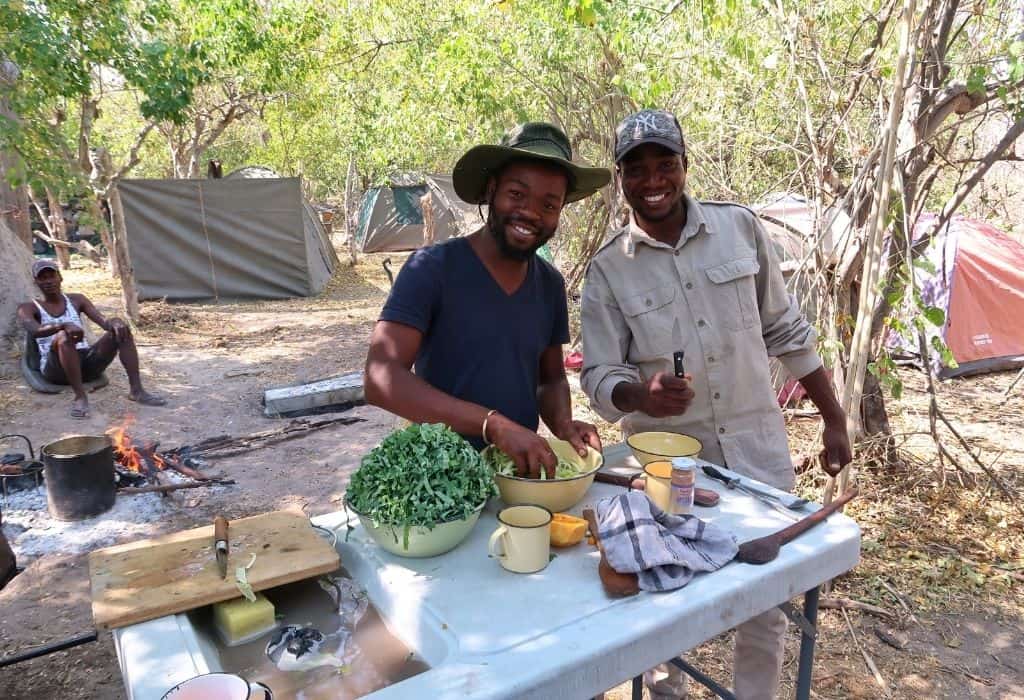
Recommended Companies
There are a few companies that I can personally recommend for your Chobe National Park safaris.
Rock My Adventure – Small Group African Adventure Tours
If you’re a solo traveller, couple or small group who wants to join a larger group, then why not join me on the Rock My Botswana & Victoria Falls Adventure tour. We visit Chobe National Park, as well as the Okavango Delta, we sleep under the stars in the Makgadikgadi Pans National Park, get up close to meerkats, go quad biking, stay at Elephant Sands and visit the incredible Victoria Falls in Zimbabwe!
The trip is a mix of comfortable (non-participatory) camping and lovely lodges! It has the best of both worlds – and the price is pretty reasonable too!
Kalahari Breeze Safaris
Based in Maun, my friends at Kalahari Breeze Safaris offer a range of different guided and non-guided safaris through Botswana, including Chobe.
They do mobile, non-participatory camping where you stay in 2-person dome or Meru tents with stretcher beds, ensuite bathrooms (short drop toilet and hot bucket showers), campfire, mess tent (with table and chairs) and a crew to look after you. Everything is provided including bedding, food and water/soft drinks – you can also add an alcohol package!
Whilst you are on your safari with your guide, the rest of the crew will go ahead of you to set up camp. When you arrive, everything is done so you can just relax and enjoy the bush. I absolutely love our mobile safaris with them.
They also organise driving lodge safaris, fly-in lodge safaris, a mix of mobile camping/lodge safaris and day trips to the Okavango Delta from Maun. If you are self-driving, they can help you arrange everything, including car hire.
Their guides are amazing and highly recommend them!

Kalahari Tours
Based in Kasane, my friends at Kalahari Tours organise trips into the Chobe Riverfront area – from day trips to 3 day, 2 night safaris. They do pick ups from Kasane, Kazungula, Livingstone and Vic Falls.
Their trips usually start with a 3-hour boat safari on the Chobe River, followed by lunch and then you head into the park in an open vehicle for the rest of your safari.
If you camp overnight with them, you’ll stay in a wild bush camp with your fellow travellers, guide and camp staff, in 2-person dome tents with bedding provided (floor mattress, sheet duvet and pillow) and shared toilets/showers (usually small tents with a small short drop toilet in one and a shower in the other).
The crew will have everything set up for you when you arrive. Dinner is usually a self-service affair, eating around the campfire. They usually stay at private campsites in the park that are only accessible to tour operators, rather than the public campsites, so there’s usually no other groups around.
They can arrange private safaris and they also have joining safaris which are great for solo travellers.
SafariBookings
If you want a quick way to look at different Botswana & Chobe National Park safari tours, then take a look at SafariBookings – the largest online marketplace for African safari tours. You can filter by different parks, length of trip and price!
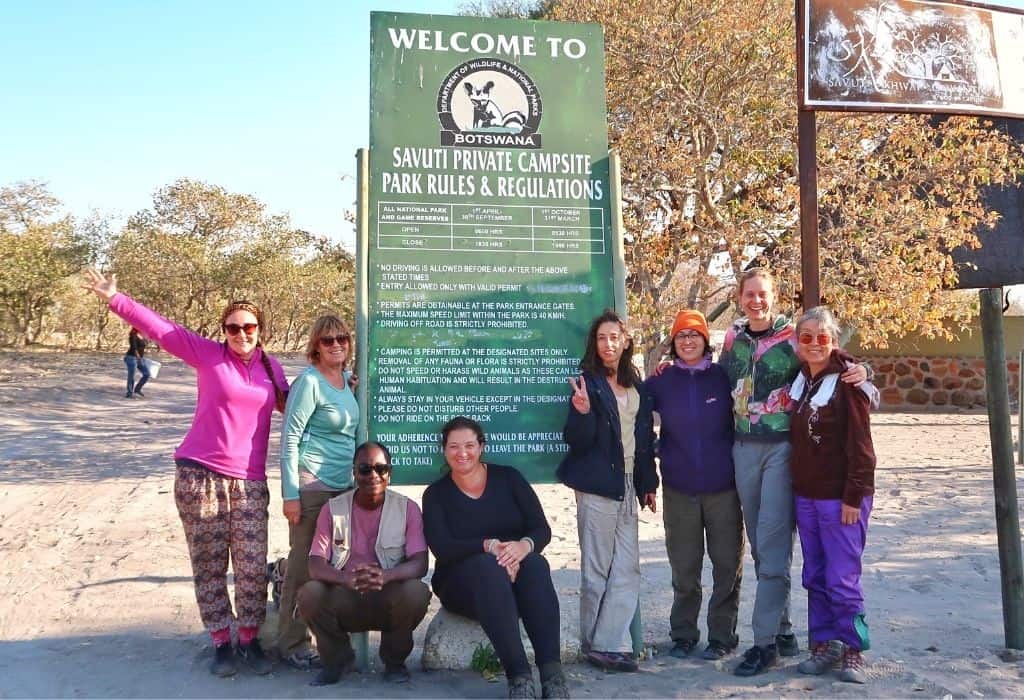
Where to Stay in Chobe National Park
Chobe has options for everyone! There are private campsites, public campsites and more luxurious lodges/tented camps – both inside and near to the park gates.
Public Campsites Inside the Park
If you’re self-driving, there are a number of public campsites inside the park. These are very popular and get very busy in high season, so you should book these ahead of time – I’ve been told a year in advance is best!
The public campsites have access to water, showers and toilets, but not all have electricity – so bear that in mind. The campsites aren’t fenced, so animals will often wander through! So be sure to secure all food when away from your camp, unless you want some uninvited guests.
If you want to book your campsites:
- Ihaha (Chobe Riverfront) campsites are managed by Kwalate Safaris.
- Savuti and Linyati campsites are managed by SKL Camps.
- There are currently no public campsites around Nogotsaa.
If you don’t want to do everything yourself, there are companies such as Kalahari Breeze who can help you with planning and booking your campsites which would save you a lot of planning work!
The local tour operators do have access to other, more private bush campsites through HATAB (Hospitality & Tourism Association of Botswana), but they are not open to self-drivers. If booking a guided camping safari, your safari company will arrange the campsites (and everything else) for you.
The tour operator bush camps don’t have bathrooms, so your safari operator will provide those as part of your package.
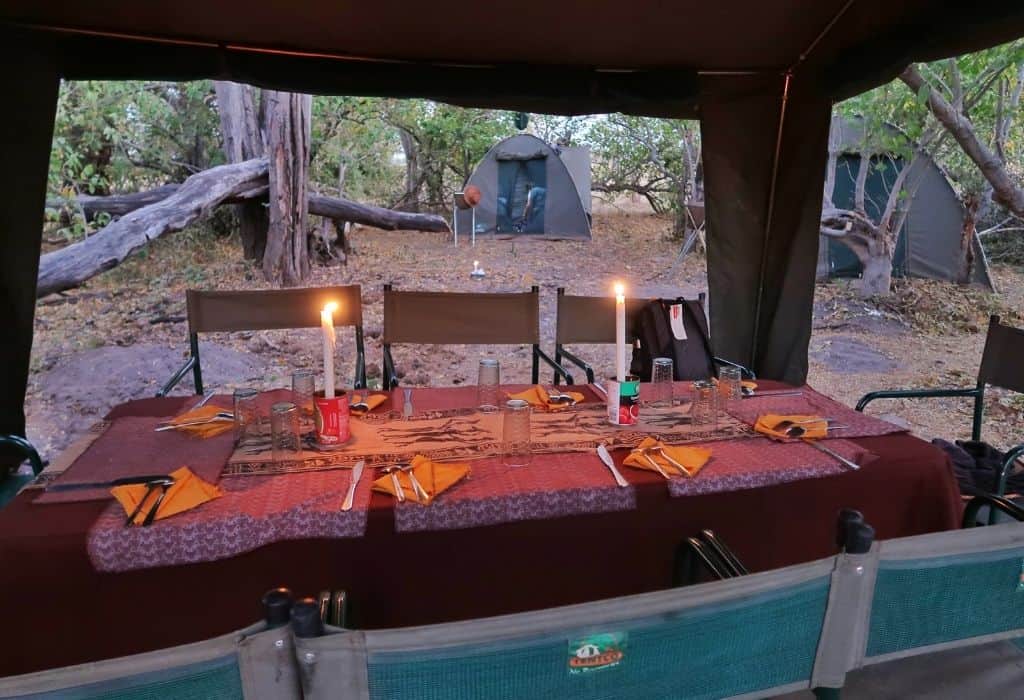
Campsites Outside the Park
There are some campsites located just outside the gates in Kasane, Ngoma and Mababe. These include:
- Thebe River Safaris: Lively lodge and campsite in Kasane. They have a popular bar. The campsite works on a first come, first service basis – you can’t book for camping.
- Senyati Safari Camp: Situated in the Lesoma Valley, 20km from Kasane, Senyati is a self-catering camp. They have campsites and some chalets. There is a bar but no restaurant. This place is popular due to its elephant waterhole.
- Chobe Forest Camp: Located about 45 minutes from Kasane on the way to Nata. They have 9 campsites with private ablutions and a pool.
- Chobe Mopani Forest Lodge & Campsite: Beautiful lodge close to Chobe Forest Camp. They have a pool that overlooks an amazing waterhole.
- Muchenje Campsite & Cottages: Self-catering cottages and campsites situated outside the park, about 7.2 km from the Ngoma gate. Communal sundowner terrace and a pool.
- Mababe River Lodge & Campsite: Family run lodge and campsite on the Khwai River with a lovely infinity pool. 9km from the Mababe Gate and about an hour from Khwai & Moremi.
- Sunset Riverview Campsite: On the transit road, near to Kavimba, about 23km from the Ngoma gate.
Lodges in Chobe National Park
There are many hotels and lodges around Chobe National Park and a few inside the park too. Most fall under the luxury category, but there are some reasonably priced hotels and campsites (above) in Kasane and outside the main gates. I’ve written a full guide to the Chobe safari lodges here.

Things To Do in and Around Chobe
Game Drive
The number one thing to do in Chobe, is to go on a game drive safari – but you probably knew that already! All hotels and safari companies can arrange these for you!
Specialist Safaris
Many lodges also offer specialist safaris, such as birdwatching or photographic safaris.
Get a Spa Treatment
Some of the hotels and lodges have a spa of some sort – in the Chobe Riverfront area, this includes Cresta Mowana Resort & Spa, Chobe Chilwero, Chobe Safari Lodge and Chobe Game Lodge. There is also a beauty salon in Kasane called Frotusa Beauty Spa.
Take a Scenic Flight
A popular activity in the area is to take a scenic flight over Chobe National Park or Victoria Falls, either by small plane or helicopter. There are several companies who do this including Pyrus Eagles, in Botswana, Batoka Sky in Zambia and The Zambezi Helicopter Company in Zimbabwe.
You can also microlight over Victoria Falls for the ultimate thrill!
Village Tours
You can take tours from some of the lodges to the local villages. It’s best to speak to your lodge/safari company to see if they can arrange this. I know of some lodges that do tours to Kazungula village and also Subiya tribe villages on the Namibian side of the Chobe River.
If you are staying near to the Mababe Gate, Khwai village is an interesting place to visit.
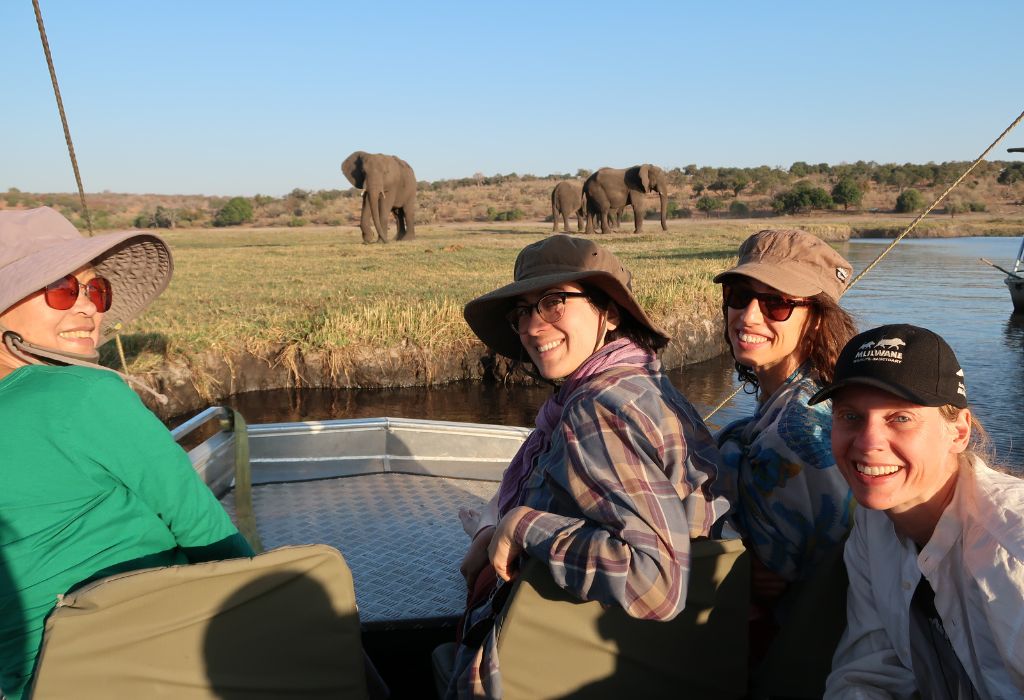
Boat Cruise
Boat safaris and sunset cruises are a popular thing to do in Chobe National Park. All safari companies and hotels in Kasane can organise these for you.
Go Shopping
There are plenty of shopping opportunities with lots of craft shops at the hotels as well as in and around Kasane, including Chobe Women’s Arts and Crafts.
If you need to pick up supplies, Kasane has plenty of supermarkets – Spar, Choppies and Shoprite Mini.
Centre for African Resources: Animals, Communities and Land Use (CARACAL)
Visit CARACAL, a non-profit conservation organisation based in Kasane, committed to preserving the local environment and wildlife. The tour lasts approximately one hour, during which you’ll have the opportunity to explore the center and observe some of the wildlife undergoing rehabilitation.
Visit the Kasane Hot Springs
Nestled in the Nyungwe valley, a historic wildlife corridor leading to the Chobe River, the Kasane Hot Springs are a natural wonder, formed millions of years ago through geological processes.
The local people believe that the water is sacred and is believed to have medicinal properties. It’s a great place to unwind after a day on safari.
Fishing
Fishing is another popular activity on the Chobe River, with most aiming to catch tiger fish, the most powerful power to weight ratio fresh water fish in the world. Other species include bream , African pike, tilapia or catfish.
The best time to go fishing is between June and August. Anglers must adhere to a strict catch and release policy for fishing activities and fishing is prohibited in Chobe during the months of January, February, and March to protect the spawning season of tiger fish.
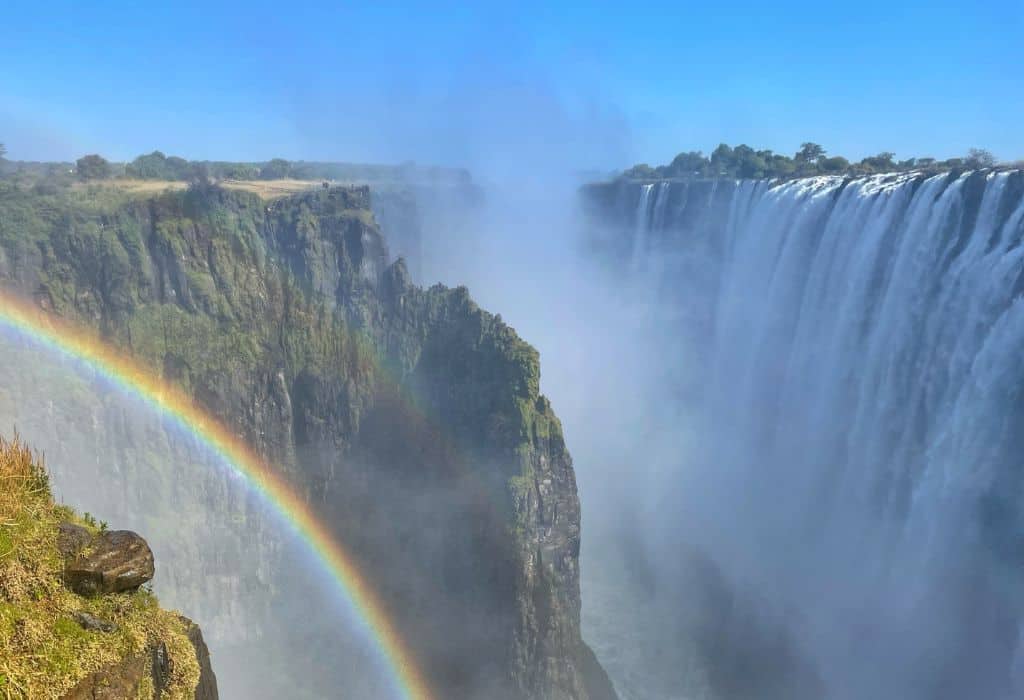
Visit Victoria Falls
About an hour away from Kasane, in Zambia and Zimbabwe, you will find Victoria Falls. You can either see Victoria Falls from the Zambian side or the Zimbabwean side. You could visit both in a day – crossing the ZimZam bridge.
If you are travelling from Botswana and want to visit both – make sure you get the KAZA visa! For more incredible things to see and do near Victoria Falls, take a look at this post.
Go for a Game of Golf
Fancy a game of golf? Then head the the Cresta Mowana Resort which has a 9-hole course on site.
Kazungula Bridge Tour
Visit the Kazungula Bridge and the world’s only Quadripoint, where 4 countries meet – Botswana, Namibia, Zambia, and Zimbabwe.
Visit Impalila Island
Take a day trip across to Impalila Island in Namibia. Visitors from Botswana are allowed to day trip here without a visa. As well as a boat tour, the trip usually includes a cultural visit to a local village.
Canoeing
You can also take canoeing trips down the Chobe River in a traditional mokoro. This is a great way to see the animals, although it isn’t for the faint of heart! It can be a bit freaky being that close to the animals without a big boat and an engine to whizz you away quickly! But the guides know what they’re doing!
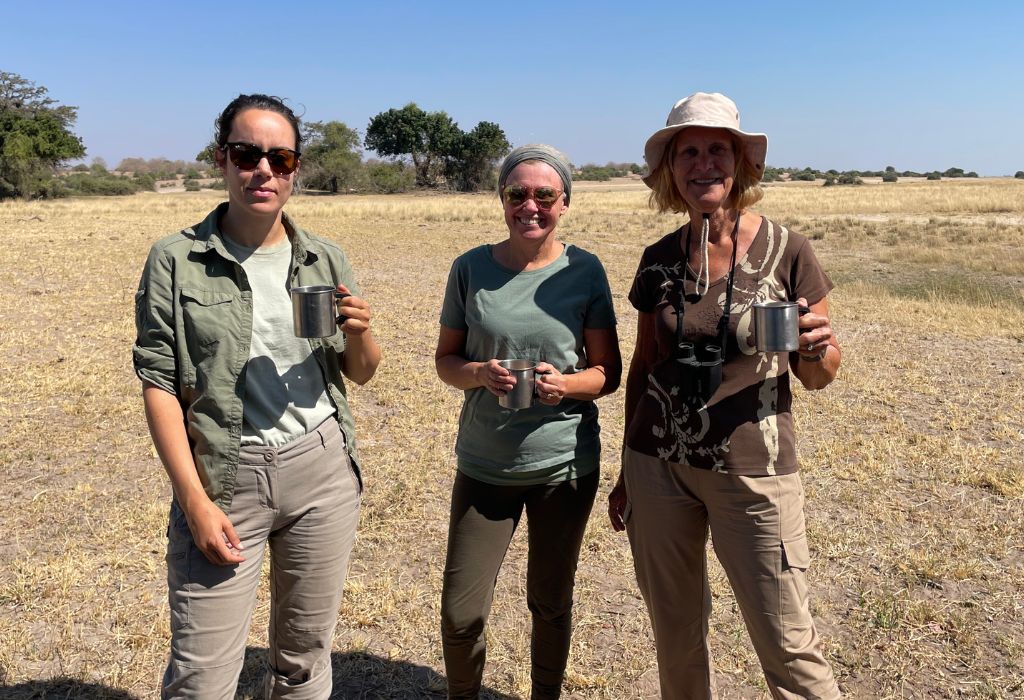
What to Wear on Safari in Chobe
For safari, I always say the key is practical, comfortable, durable and easily layered clothing – things that you don’t mind getting dusty, won’t rip easily and that are easy to wash (leave the dry-clean only clothes at home). Depending on the time of year that you go, it can be freezing in the morning and evenings (see above) but warm during the day.
You don’t have to buy a whole new wardrobe for safari. When you’re on a driving safari, you can realistically wear any colour, as the animals won’t really see you specifically – I’ve worn my bright pick puffer jacket on many safaris and never scared off an animal because of it.
However… Botswana does suit the more neutral colours and they are generally more practical anyway. And if you go on any walking safaris on your trip, they will tell you to wear more greens, khaki, brown etc and avoid bright pink, red, yellow, blue, black and white! Black and blue are said to attract tsetse flies.
And let’s face it, those cute safari outfits look great in your pics!
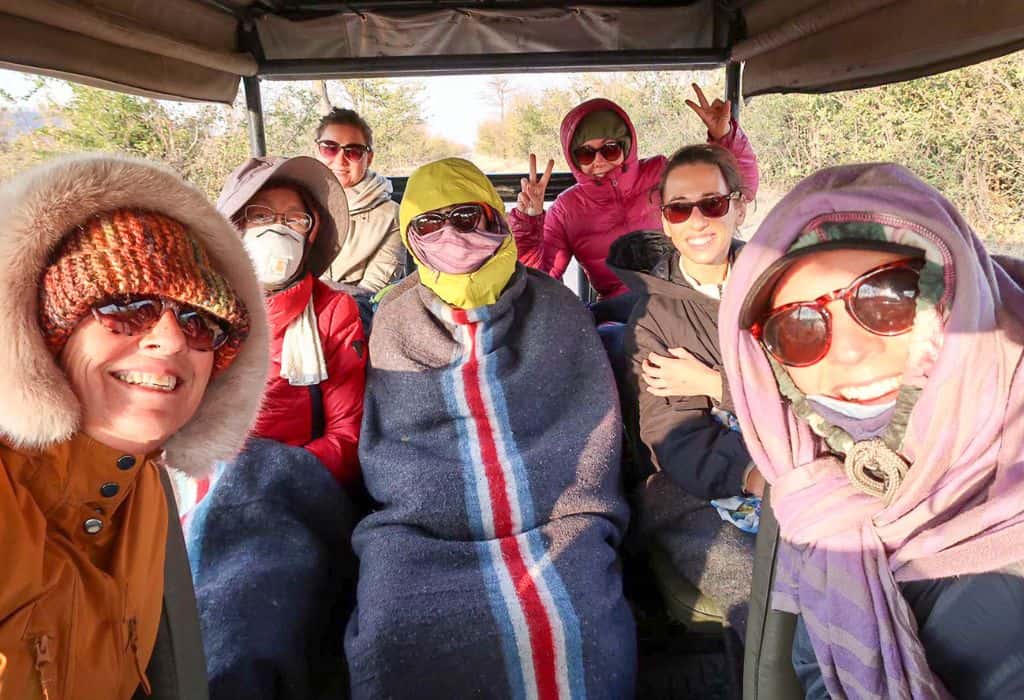
During the day, I usually wear a t-shirt, long sleeved lightweight shirt for sun protection, comfy pants or shorts, Birkenstocks, a wide-brimmed hat and sunglasses. I’ll add socks, a fleece, puffer jacket, beanie, gloves if it’s cold.
During the evenings, I generally wear the same, but switch into closed toed shoes! I would avoid jumpsuits (in case you need to pee in the bush), as stripping off isn’t fun or easy!
For more info on what else to bring, check out my full guide on What to Wear on Safari & Packing List.
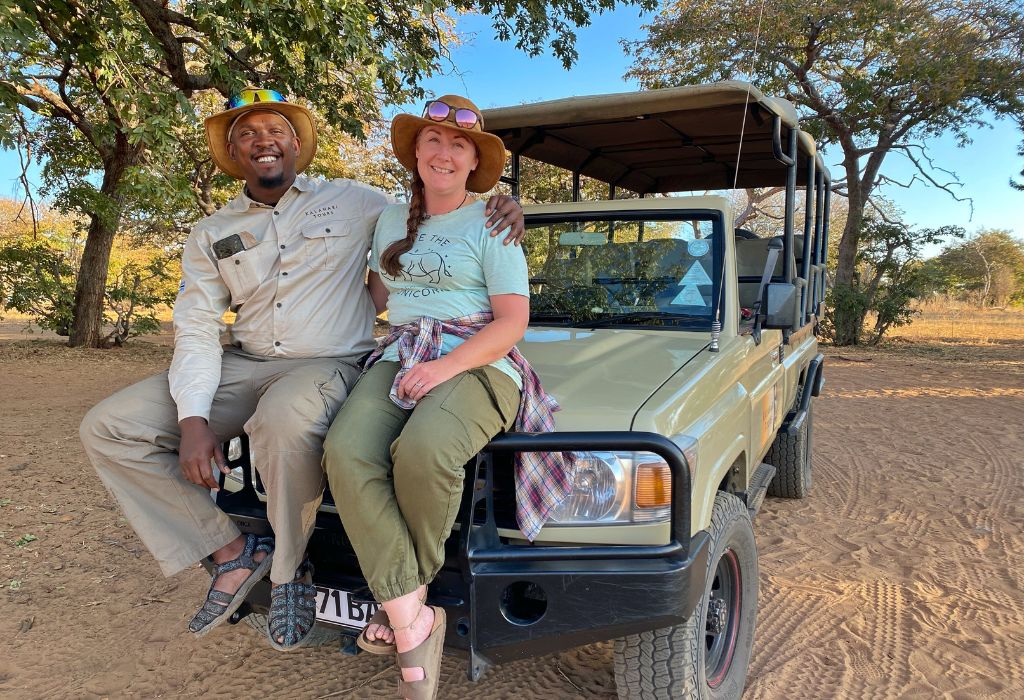
Health & Safety in Chobe National Park
Botswana is one of the safest countries in Africa, and Chobe is generally very safe in terms of crime but you do need to be careful of the wild animals! Remember Chobe is very wild and full of dangerous animals – elephants, hippos, lions, leopards, crocs…
When on an organised safari, listen to the advice and safety instructions given to you by your guides. If self-driving, familiarise yourself with the park rules.
Do not hang out (or hang anything out) of the safari cars or get out of your car to get a better look at the animals. I have seen self-drivers do this numerous times.
They usually get back in quickly when the guides start screaming at them. Only get out at designated camps and picnic sites and check around before you do so. Remember that the animals can move quickly!
Don’t go wandering about in the bush on your own, especially at night and do not approach any animals and definitely do not feed them. Be careful when storing food – everything must be stored away correctly – not in your tent, unless you want some unwanted visitors.
To avoid bites from mosquitos (malaria is prevalent in Chobe and Botswana) and tsetse flies (whilst sleeping sickness, wear a strong bug spray and cover up, especially as dusk and dawn when the mosquitos are more active. And avoid black and blue clothing, as this is said to attract tsetse flies.
Drink lots of water and cover up from the sun to avoid heatstroke. Do not drink the tap water directly, instead drink bottled, treated, boiled or filtered water.

How Much Does it Cost to Go on Safari in Chobe National Park?
The park fees for Chobe are pretty reasonable, so the cost of a safari in Chobe National Park really depends on how you travel and what type of accommodation you choose.
Prices for a 3-hour guided safari in the Riverfront area start at around $50 (inc. park fees) and full day from around $100 (inc. park fees, but not including tips/accommodation/food etc), to thousands and thousands of dollars for a high-end multi-day trip.
If you are taking a package tour, almost everything will be included, aside from things like tips, any optional activities and extras like alcohol/drinks. Most high-end lodges include everything.
The daily park fees for Chobe National Park are:
| Per Person, Per Day | Citizen | Resident | Non-resident |
| Adults (18 +) | 10 BWP | 30 BWP | 120 BWP |
| Children (8 – 17 years) | 5 BWP | 15 BWP | 60 BWP |
| Children (7 and under) | Free | Free | Free |
There are also vehicle fees to pay too, so just be aware of those:
| Private Vehicles – Daily Fees | Botswana Registered | Foreign Registered |
| Motor Vehicles Under 3500kg | 10 BWP | 50 BWP |
| Motor Vehicles 3500kg – 7000kg | 500 BWP | 1,000 BWP |
| Motor Vehicles Over 7000kg | 800 BWP | 1,500 BWP |
Opening Times
- April to September: The gates open at 6am and close at 6.30pm.
- October to March: The gates open at 5.30am and close at 7pm.
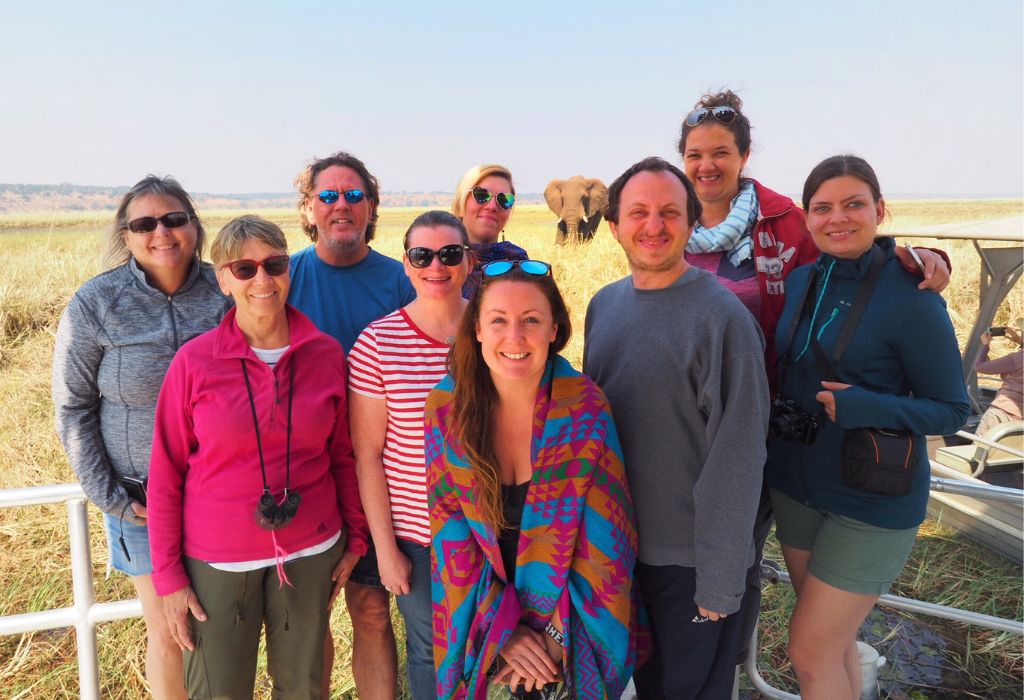
Tipping in Chobe National Park
The general tip guidelines for a camping safari in Chobe are $10 a day per person, per day for guides and $5 per person, per day for other staff. You can either tip in USD or BWP.
So if you’re doing a group safari, for 3 days you personally would put in $30 for the guide, $15 for the cook, $15 for the camp assistants/managers etc. You can of course, tip more or less, depending on the level of service you got.
It may seem like a lot – considering how much you’re probably paying for your safari anyway, but unfortunately Botswana is just an expensive country and tipping does ensure that you get good service.
If you’re staying at a luxury lodge, you will be expected to tip more. Your lodge or safari company should be able to offer tip suggestions.
Other Botswana posts you might enjoy…
- Where to Stay in Chobe National Park, Botswana
- How to Visit Botswana on a Budget: Everything You Need to Know
- 21 Amazing Things to Do in Botswana
- The Best Botswana Safaris – 3 Incredible Itineraries
- The Best Places in Africa to See Elephants
- Visiting the Okavango Delta on a Budget – Everything You Need to Know
- Where to Stay in Chobe National Park
- Botswana & Victoria Falls Group Trip
- The Safest Places in Africa
I hope this blog post helps you plan a great safari in Chobe National Park! I’d love to hear about your experiences in the comments below!
Pin This Post For Later
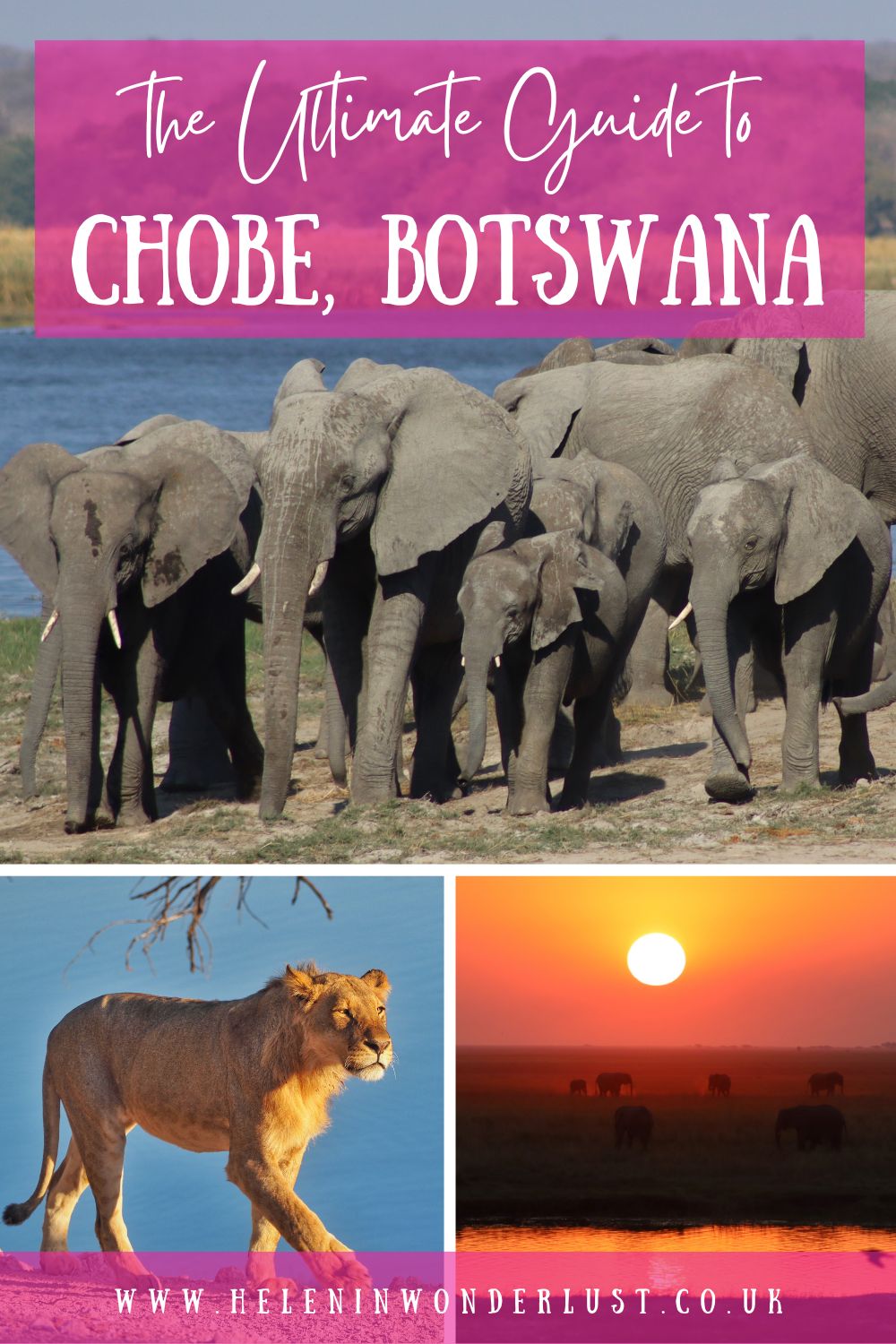


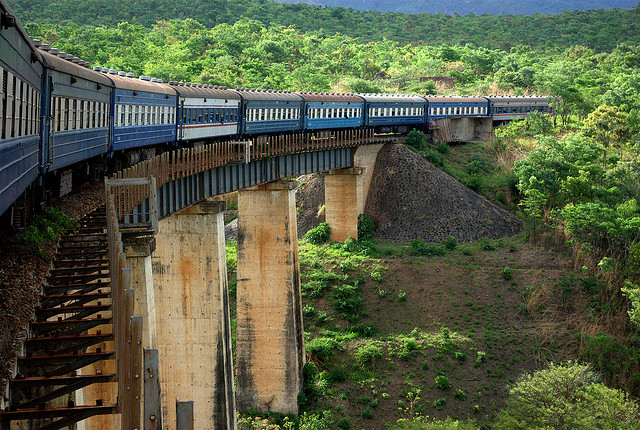
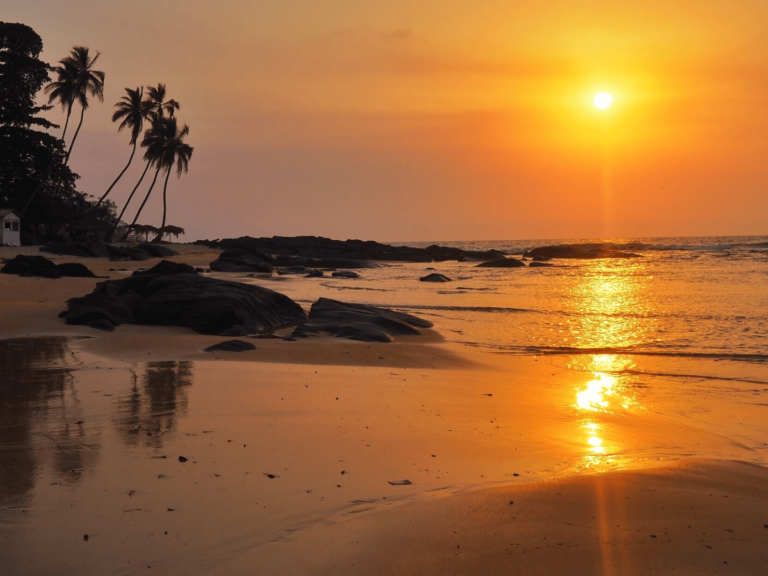
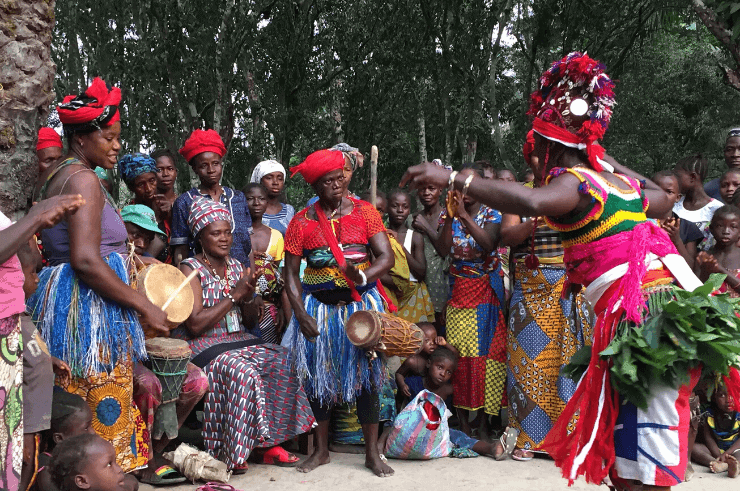
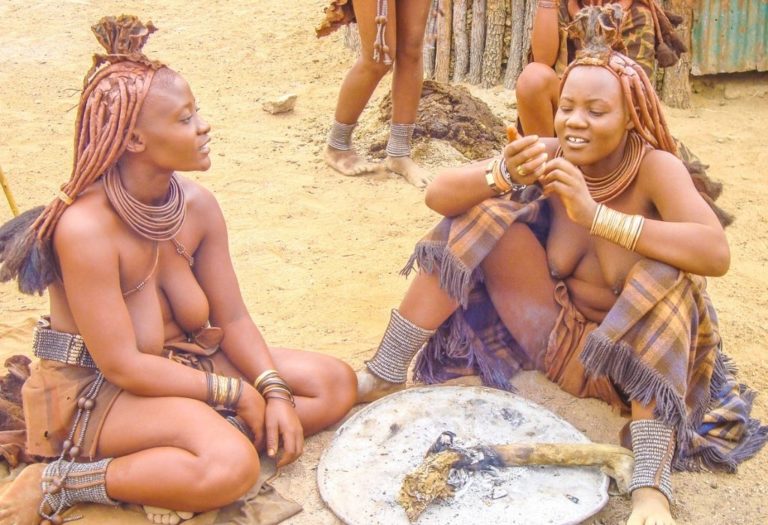
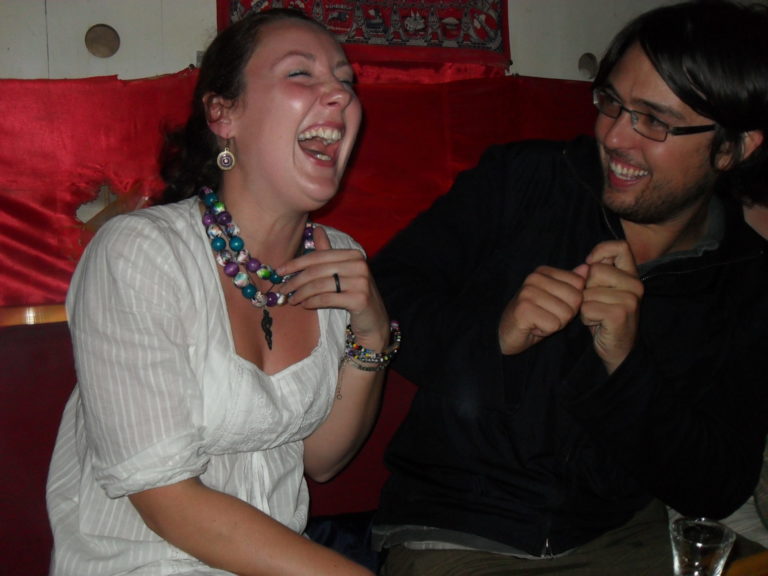
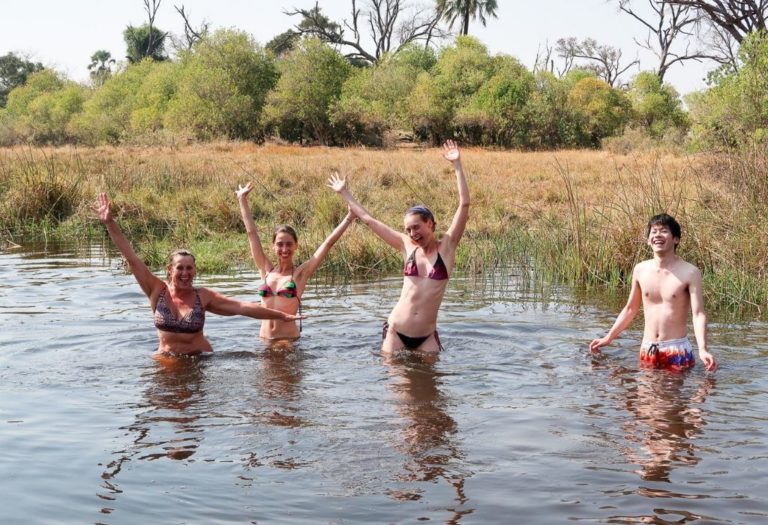
With Kalahari Tours It seems the a one-day water and land safari with a light breakfast, lunch, and transportation from Livingstone lodges is US$180. If you drive yourself to the border, it is about $130.
But a 3-hour private boat tour and a 3-hour private game tour (with Kalahari) is about $60 per person (including entrance fees). We could drive ourselves to the border, get a taxi to the Kalahari Tour office, do the boat tour, buy our own lunch, and then do the game drive. We would save about $100 per person.
Am I missing something?
Hi John,
As far as I am aware, Kalahari Tours don’t do short game drives/boat trips like that into the park – they do the packages, and the full day, with lunch included is the minimum (and their lunch is usually amazing). So, yes, with the return transfers, you’re paying around an extra $50 pp – $25 pp each way. I’m sure they would reduce if only going 1 way.
However, some of the hotels based in Kasane (like Thebe River Safaris) do the game drives/boat trips that you can book separately.
Transfers from Livingstone aren’t very cheap these days, $30 pp each way seems to be about the going rate. If you can get cheaper – awesome. But if you get a taxi, you would usually need them to wait if the plan was to go back to Livingstone, so that can bump up the cost.
Then you’d need pick up on the other side – not sure how much it would cost going from Kazungula into Kasane. I don’t think (but don’t quote me) that there were any taxis waiting at the border last time I went as very few people rock up to the border without transport already planned. I could be wrong though.
But it’s probably easiest to arrange a pick up with the safari company you choose. Not sure how much that would cost, you’d have to ask them. But I can’t imagine that you’d get transport from Livingstone (in one car) and then transport from Kazungula to Kasane in another car (return) cheaper than $50 pp. Unless you used public transport – but then you’d probably miss your safari! 🙂
If you have your own car, it will be cheaper, obviously. If you plan to leave your car at the border – I would just check if you are able to do so. There is a car park, but I’m not sure how long you can park there for.
And if you plan to cross the Kazungula Bridge with a car, then I presume there will be toll fees and a TIP to pay for (probably not worth the hassle unless you plan to stay in Botswana for a while).
Hello Helen
I really enjoyed your post on Chobe National Park in April 2024. You covered the whole of Chobe.
We just went on a three day camping safari to Chobe following on from a Rockjumper birding tour of Namibia and Botswana finishing in Victoria Falls. I had been to Chobe previously in 1975 with my South African girlfriend. It had and hadn’t changed!
I have just written an article on this visit to Chobe and I included a link to your article as a comprehensive addition to exploring Chobe in the further information section.
My article is at breadtagsagas:
https://www.breadtagsagas.com/chobe-national-park-camping-safari/
I hope you enjoy it.
Let me know if you find any mistakes.
All the best Tony